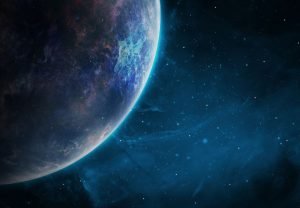Giant planets may be hiding in the solar system in the Oort cloud

 Giant planets lurking in the farthest part of the solar system may become a new object of research for planetary scientists.
Giant planets lurking in the farthest part of the solar system may become a new object of research for planetary scientists.
European and American scientists have found evidence of such planets in the Oort Cloud, which is 10 to 100 times farther from our Sun than the hypothetical “Planet X”. An article with the results of the study was published in the arXiv.org.
The scientists performed calculations and came to the conclusion that planets that formed inside the chaotically arranged Oort cloud or fell into it from the outside can exist inside it for billions of years.
This opens up the possibility of the existence of large exoworlds in similar regions of planetary systems. If such a planet is indeed inside the solar system, then it is tens or hundreds of times further away from “planet X”.
In addition to the planets, the solar system also has a huge number of asteroids and comets. Most of them are in the main asteroid belt, the inner region of the solar system, and comets are concentrated in the Oort cloud on its outskirts. This cloud is an accumulation of matter located 150-1.5 thousand times further from the Sun than the Earth.

In recent years, astronomers have been paying special attention to the study of the Oort cloud in the hope of discovering the mysterious “Planet X”, hints of the existence of which were discovered several years ago.
A group of planetary scientists from Europe and the United States, led by Sean Raymond from the University of Bordeaux, came to the conclusion that very large planets can be located inside the Oort cloud. They studied the behavior of objects inside the cloud in the early stages of the evolution of the planetary system.
The solar system, in the course of its evolution, got rid of many protoplanets and full-fledged planets, presumably thrown into outer space as a result of gravitational interactions with other objects. Scientists wondered if it was possible that some of these worlds were trapped inside the Oort cloud.
The results of the calculations indicate that up to 10% of the ejected planets could be captured by the Oort cloud, where they could be in a stable orbit or exist in a semi-stable state for billions of years. Thus, in the solar system and hundreds of thousands of other planetary systems, there probably exist giant planets hidden inside the Oort cloud or its analogues.
In addition, scientists’ calculations show that with a probability of about 7%, planets ejected from other planetary systems and entered the solar system from outer space can also get stuck inside the Oort cloud.
The search for such exoworlds will be one of the main tasks for a new generation of observatories, such as the European telescope E-ELT and its American counterpart TMT, the researchers say.
Greetings, explorer! We thank our supporters from the bottom of our hearts for their generous donations that keep anomalien.com alive. If you’d like to join the cause and help us continue to deliver amazing articles, please consider making a donation. Let’s keep the 👽 smiling!Follow us on Instagram, Twitter and Telegram for interesting and mysterious bonus content!




